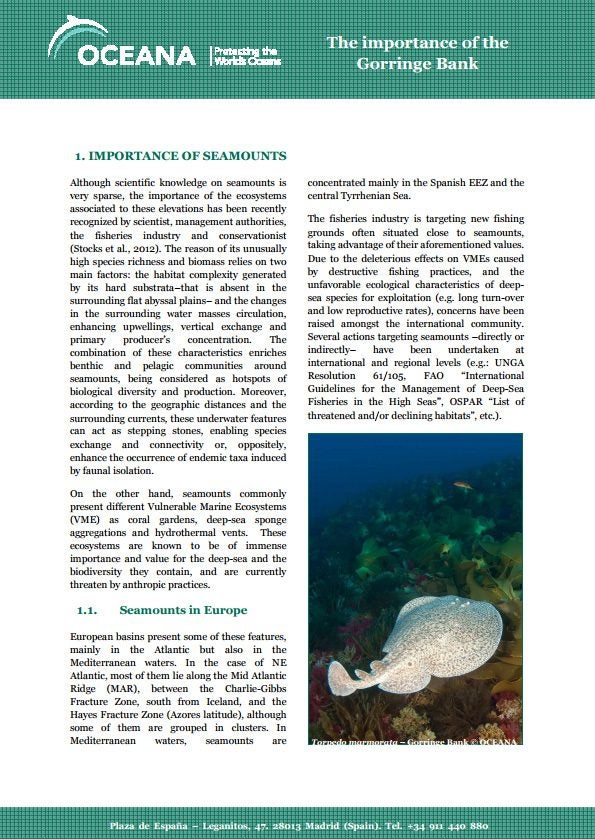Report | June 9, 2016
The importance of the Gorringe Bank
Although scientific knowledge on seamounts is very sparse, the importance of the ecosystems associated to these elevations has been recently recognized by scientist, management authorities, the fisheries industry and conservationist (Stocks et al., 2012). The reason of its unusually high species richness and biomass relies on two main factors: the habitat complexity generated by its hard substrata–that is absent in the surrounding flat abyssal plains– and the changes in the surrounding water masses circulation, enhancing upwellings, vertical exchange and primary producer’s concentration. The combination of these characteristics enriches benthic and pelagic communities around seamounts, being considered as hotspots of biological diversity and production. Moreover, according to the geographic distances and the surrounding currents, these underwater features can act as stepping stones, enabling species exchange and connectivity or, oppositely, enhance the occurrence of endemic taxa induced by faunal isolation.
On the other hand, seamounts commonly present different Vulnerable Marine Ecosystems (VME) as coral gardens, deep-sea sponge aggregations and hydrothermal vents. These ecosystems are known to be of immense importance and value for the deep-sea and the biodiversity they contain, and are currently threaten by anthropic practices.


